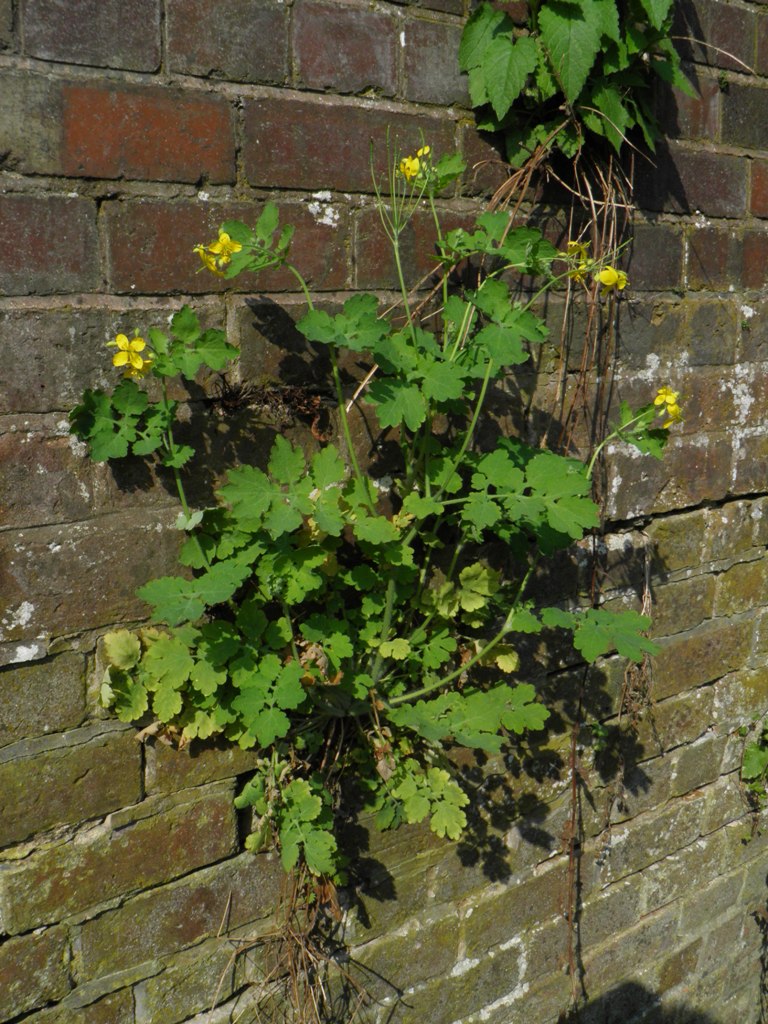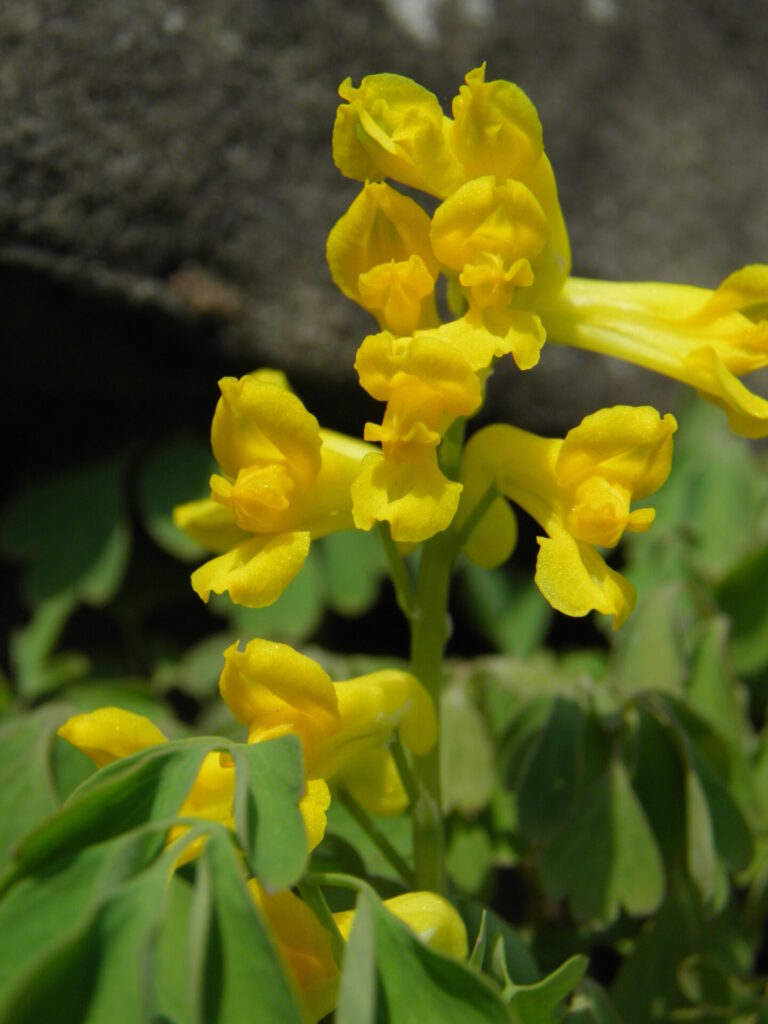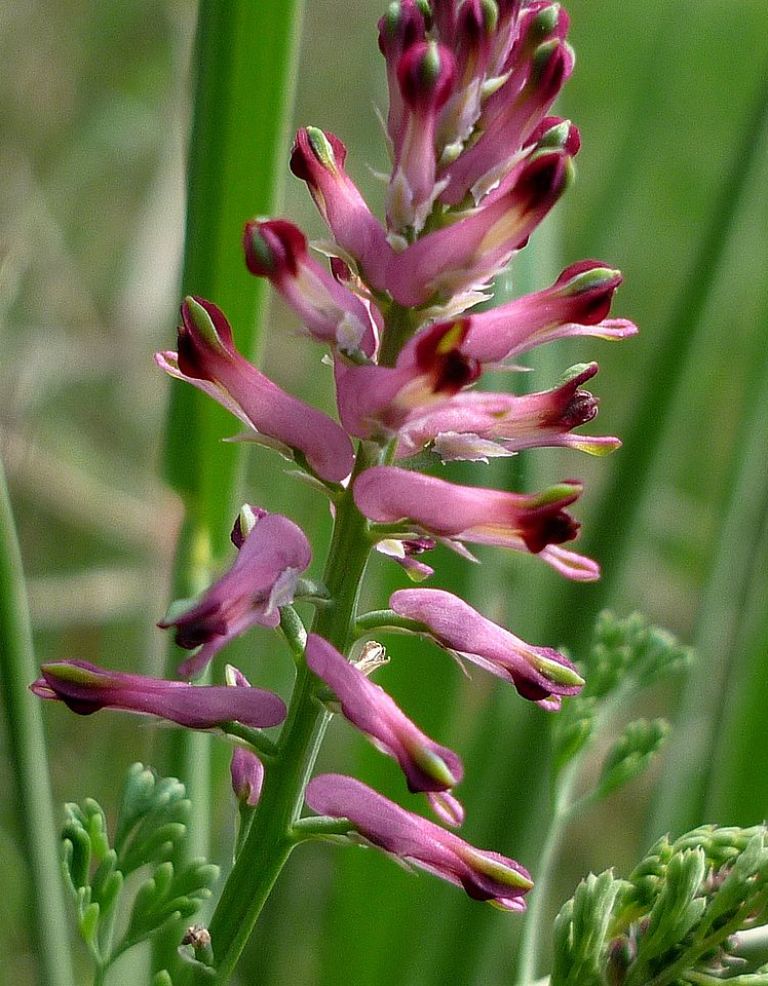
The post in November 2018 explained all about the uses and stories behind the genus Papaver which includes the Common Poppy, Welsh Poppy and Opium Poppy.
To remind ourselves:
The Poppy family or Papaveraceae has 12 genera and is split into 2 Sub-families;
- the Papaveroideae with 7 genera which includes Papaver.
- and the Fumarioideae with 5 genera.
The Papaveroideae has 2 sepals, 4(-6) showy petals, and white or yellow latex.
The distinctive flowers of subfamily Fumarioideae are unique, but the two subfamilies are linked by intermediates (Stace).
Colour coding for easy reading is blue for general interest. Green for various uses of the plant and pink background for medicinal use or toxic warning!
This is just an educational blog on Ethnobotanical uses of plants and we can not take any responsibility for any adverse effects! Always seek advice from a professional before using a plant medicinally.
Contents:
Glaucium flavum or Yellow horned poppy
Chelidonium majus or Greater Celandine
Pseudofumaria lutea or Yellow Corydalis
Pseudofumaria alba or White Corydalis
Ceratocapnos claviculata or Climbing Corydalis
Fumaria spp. or Fumitories
Glaucium flavum
Glaucium flavum or Yellow horned poppy
is an attractive plant growing on our coast. Apparently it has the longest fruit of all the native plants on the British Isles!
All parts of the plant, including the seeds, are toxic, and can cause a wide range of symptoms including brain damage (if eaten), and respiratory failure, resulting in death!
Uses:
There is an orange flowered variety called Glaucium flavum f. fulvum, which I grow on my allotment from Hillview Nurseries in Shropshire:
Blue foliage all year. Orange poppy-like flowers followed by long seedpods. This looks fabulous in the garden, especially if you grow it in a ‘gravel garden’ as a mini beach. It is a “must have” plant. Self seeds.
Glaucine is the main alkaloid component in Glaucium flavum. Glaucine has bronchodilator and antiinflammatory effects, acting as a PDE4 inhibitor and calcium channel blocker and is used medically as an antitussive in some countries. Glaucine may produce side effects such as sedation, fatigue, and a hallucinogenic effect characterised by colourful visual images, and as a recreational drug. For a detailed bibliography on glaucine and Glaucium flavum see: National Agricultural Library.
In the past, it was known in Hampshire, UK as ‘squatmore’, and the roots were used to treat bruises. Also for pains in the breast, stomach and intestines.
Chelidonium majus
Chelidonium majus or Greater Celandine
This again is an attractive plant, particularly in flower and there is also a double form of it, I’ve seen growing at Castle Bromwich Hall Gardens. It is an archaeophyte according to Stace.
I have learnt at least one ‘medicinal’ use of it since childhood to use the orange sap in order to remove warts! Our manager at our allotment now calls it the ‘Wart plant’!
Julian Barker in his Medicinal Flora does give a list of uses but primary for liver and gall-bladder. He does mention some drawbacks of which one is its toxicity!
The following traditional uses are from Wikipedia:
As far back as Pliny the Elder and Dioscorides (1st century CE) this herb has been recognized as a useful detoxifying agent. The root has been chewed to relieve toothache.
John Gerard‘s Herball (1597) states that “the juice of the herbe is good to sharpen the sight, for it cleanseth and consumeth away slimie things that cleave about the ball of the eye and hinder the sight and especially being boiled with honey in a brasen vessell.”
It was formerly used by some Romani people as a foot refresher.
Modern herbalists use its purgative properties. The modern herbalist Juliette de Baïracli Levy recommended greater celandine diluted with milk for the eyes and the latex for getting rid of warts.
Chelidonium was a favourite herb of the French herbalist Maurice Mességué. Chelidonium majus has traditionally been used for treatment of various inflammatory diseases including atopic dermatitis.It is also traditionally used in the treatment of gallstones and dyspepsia.
Edible Uses: Very much a famine food, to be used when all else fails!![Ken Fern].
The oil as well as the leaves can be used. The leaves are boiled with clean earth, the mixture is left overnight and then thoroughly washed in several changes of water.
The other native genera + species in subfamily Fumarioideae are:
Pseudofumaria lutea
Pseudofumaria lutea or Yellow Corydalis
This plant is a neophyte and naturalized in many towns and other often stony places and too pretty not to include here in my blog. It did very well in our old garden in Walsall!
Pseudofumaria alba

Pseudofumaria alba or White Corydalis
This is a pretty neophyte, which was cultivated in Britain by 1594; it is only occasionally grown in gardens, and is much less common than P. lutea. A friend of mine has a beautiful glaucous form which may be subsp. acaulis?
Ceratocapnos claviculata
Ceratocapnos claviculata or Climbing Corydalis
This is a native and grows well in impoverished soil under bracken, perhaps because it flowers early in the year before the fronds develop fully. It is the food plant for the weevil, Procas granulicollis and the beetle, Sirocalodes mixtus.
Pollination is by honey bees and bumblebees.
Fumaria spp. or Fumitories
This genus has 10 species in the B.I. of which six are native and four including the Fumaria officinalis or Common Fumitory are archyophyte.
The following is said by Julian Barker in his excellent Medicinal Flora:
Fume-terre means smoke of the earth. Given the right conditions of light and bare earth, the grey-green leaves really do catch your attention as a waft of smoke. the smell of the root is acrid and can bring tears–smoke in your eyes!
The fresh or dried herb can be added to sour plant milks. A few sprays are added to each litre of liquid and left until the liquid has soured thickly. The sprays are then removed. It gives a tangy taste to the milk, acts as a preservative and prevents the rancid taste that can accompany soured milk.
Fumitory has been highly valued since at least Roman times for its tonic and blood cleansing effect upon the body. It is particularly valuable in the treatment of all visceral obstructions, particularly those of the liver, in scorbutic affections and in troublesome eruptive diseases of the skin, especially eczema (for which it can be taken internally and externally). The herb is antispasmodic, aperient, cholagogue, slightly diaphoretic, mildly diuretic, laxative and weakly tonic.
Some caution should be exercised in the use of this herb since excess doses cause hypnotic and sedative effects, especially if it is taken for more than about 8 days!













